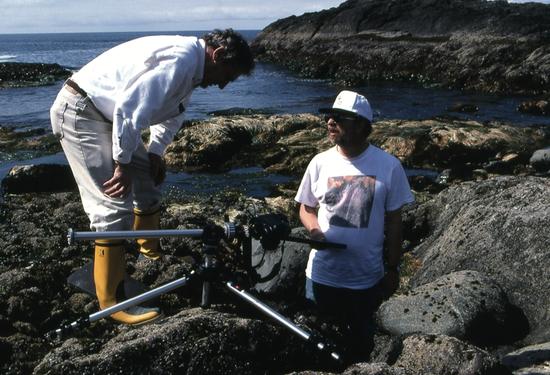Notes on Marine Exploring
Tides and Tidal Zones
Tides—the alternating rise and fall of sea level in oceans and other bodies of water—are caused by the gravitational effects of the sun and moon. In the Pacific Northwest, the difference between high and low tide may exceed 7 metres in some areas. Tides are regular events that can be forecast, and they are recorded and published as tide tables or calendars.
The band of shoreline that lies between the terrestrial and oceanic (subtidal) environments—that part of the land that is exposed at low tide and submerged at high tide—is called the intertidal zone, and it consists of upper, mid- and lower sub zones. It is a glorious place that contains various unique habitats that are fascinating to explore.
With this wonderful opportunity comes a responsibility to protect the organisms living there. If you turn over a rock to see what is underneath, put it back where it was—creatures locate on either side for good reason. Leave no refuse. Better yet, carry a bag and remove foreign materials as a mini beach cleanup. For snorkellers and divers, good behaviour underwater is equally important. Move carefully through the water, along the sea bottom and near reefs, pilings and other natural or manmade structures. Many years’ worth of stability and growth of some organisms can be destroyed in a few minutes of carelessness near a reef or wall.
Harvesting Food
Gathering the ocean’s bounty for recreational and commercial reasons is a long-established tradition. Over time, as some species have become scarcer, governments have imposed more limits on such activities. If you plan to harvest organisms to eat, check with local fisheries and wildlife officials first. They will give you information on gathering limits, necessary permits, presence of marine biotoxins such as Red Tide (PSP) and other local considerations.
Safety
Whether you are exploring marine life in the intertidal zone or in deeper water with scuba equipment, exercise caution—Pacific Northwest environments are often challenging. Weather, tides and currents can all be hazardous, so find out about them before planning an outing. Wear suitable clothing and footwear, and always be alert for slippery or jagged surfaces, unexpected wind or wave action, boat traffic and so on.

